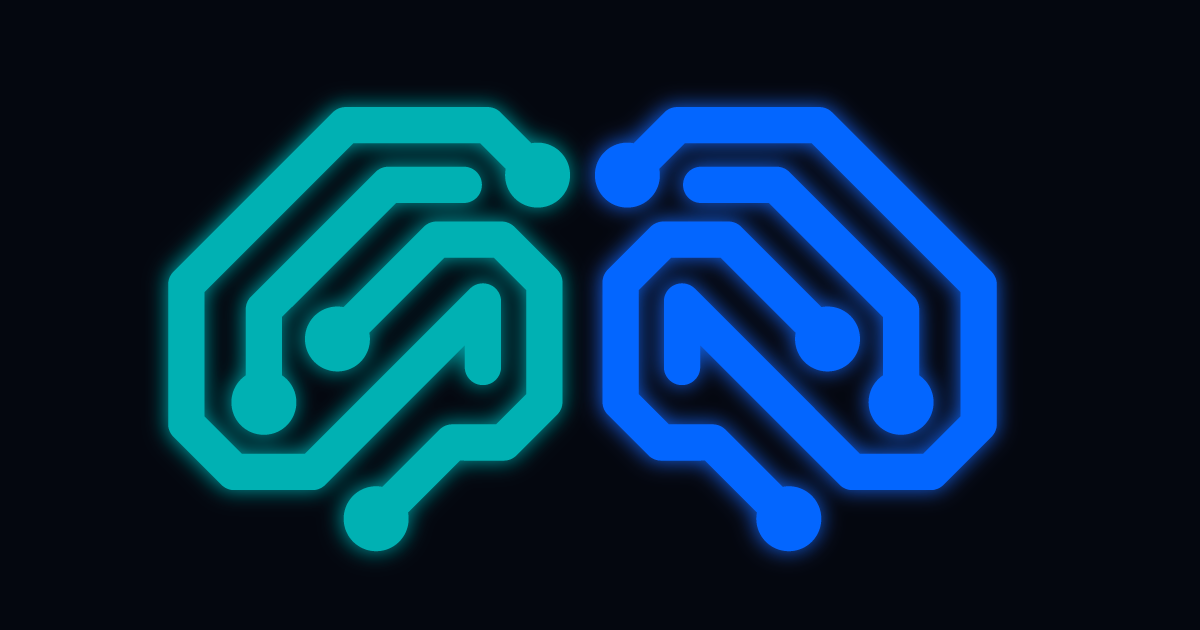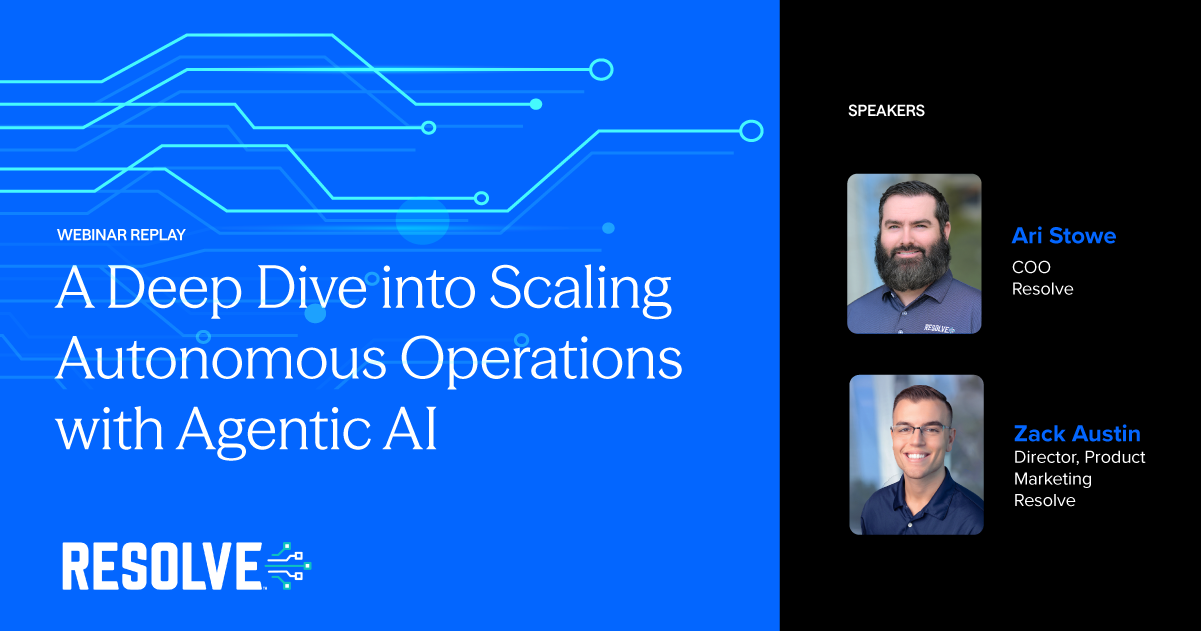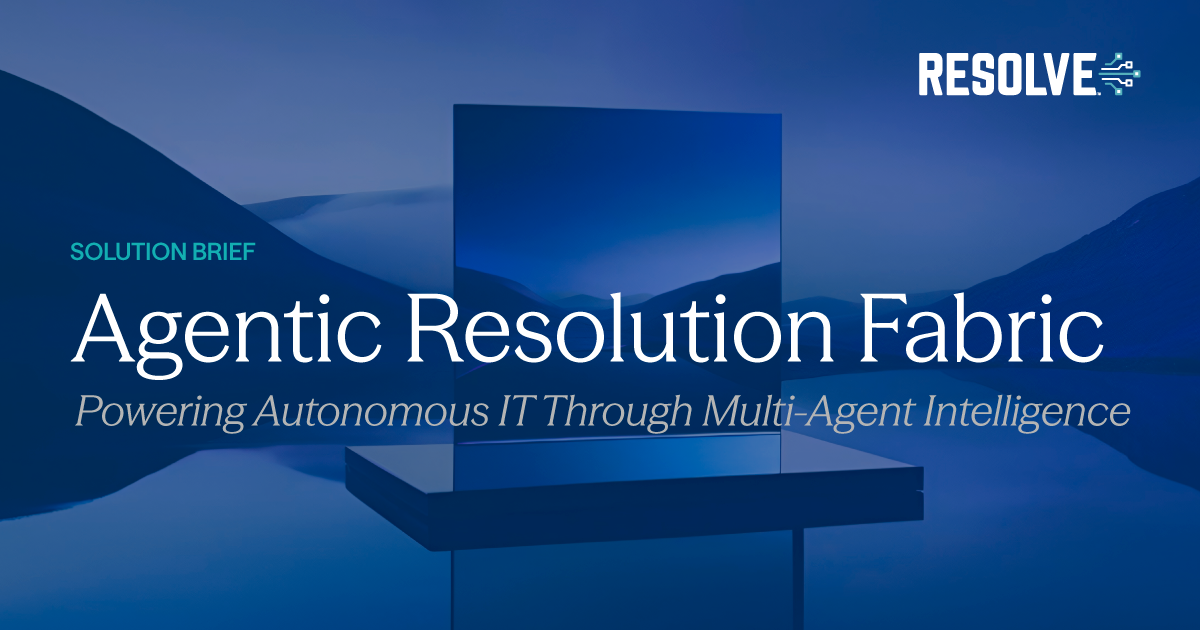
Why Generative AI Isn’t Enough: You Need Agents, Not Just Answers
Subscribe to receive the latest content and invites to your inbox.
Where We've Been: Automating the Process, One Playbook at a Time
At Resolve Systems, our mission has always been to simplify the complex. For over a decade, we've partnered with enterprises to tackle operational chaos through automation, orchestration, and intelligent workflows. Whether it's accelerating incident resolution, eliminating repetitive tasks, or optimizing service delivery, we've consistently focused on delivering real outcomes, not just flashy features.
Over the years, we've evolved from static runbooks to dynamic workflows powered by data, logic, and intelligent decision-making. Along the way, we've helped IT, service, and security teams slash ticket volumes, cut MTTR, and scale operations without increasing headcount.
But today's enterprise environment demands more. The pace, complexity, and volume of operations are outstripping the capabilities of traditional automation. It's no longer enough to automate steps. Enterprises now need automation that can think, reason, and act.
This is where agentic AI enters the picture.
The Limitations of Generative AI: Talk Without Action
It's impossible to ignore the splash that generative AI has made. Tools like ChatGPT, Bard, and others have fundamentally changed how people engage with content and information. The ability to generate human-like text, summarize documents, answer questions, and even write simple code has captivated both consumers and enterprises alike.
In business settings, generative AI has been deployed in a variety of use cases: automated knowledge responses, intelligent chatbots, content creation, and even customer support scenarios. It's a step up from static rule-based bots, offering a more flexible, conversational layer of intelligence.
However, for all its flash and promise, generative AI is still limited to one thing: producing content. It doesn't execute workflows, make decisions based on real-time system data, or act across integrated tools and services. Ask a GenAI model to summarize an incident response protocol, and it will. Ask it to carry that out across your environment, and you're back to manual execution.
This is the plateau enterprises are hitting: they've adopted generative AI, but they're not seeing a corresponding leap in productivity or autonomy. In fact, it's not uncommon for GenAI to create more noise. Answers are long-winded, occasionally inaccurate, and require human review before any action is taken. That adds friction, not speed.
The result is a reality where AI might give you helpful suggestions, but you're still stuck doing all the work. For IT and operations teams already buried in tickets, alerts, and escalations, that's simply not good enough.
Enterprises don't just need content. They need outcomes. They need a new breed of AI; one that doesn't just suggest next steps but actually takes them.
Introducing the Agentic AI Platform: From Answers to Autonomous Action
This is where agentic AI comes in—and where Resolve is advancing the next evolution of our platform. Unlike generative AI, which is designed to generate outputs, agentic AI is designed to proactively drive outcomes. It's built not just to think, but to act—safely, autonomously, and intelligently.
Here's what that looks like in action:
- Autonomous Execution: Resolve's agentic platform can take end-to-end action across your IT ecosystem. It initiates, orchestrates, handles exceptions, and confirms resolution without waiting on a human to copy-paste from a chatbot window.
- Problem-First Automation: Rather than relying on predefined workflows or goal-seeking logic, our agents analyze a specific issue or request and determine the automation steps required to solve it. It's an intent-aware system that builds and adapts workflows based on real problems, not just pre-scripted flows.
- Multi-Step Orchestration: Resolve agents can execute complex sequences across multiple tools and environments. They can reason through if-then logic, respond dynamically to system feedback, and iterate until the problem is resolved.
- Contextual Awareness: Our platform maintains full awareness of environment, system state, historical data, and interdependencies. This allows the agents to make informed decisions in real time, not just react to prompts.
- Enterprise-Safe Autonomy: Guardrails, audit logs, escalation paths, and policy-based approvals ensure automation is always safe, governed, and explainable. This isn't a black box—it's AI-driven execution with visibility and control.
Resolve is fusing orchestration and AI into a single intelligent layer that understands what needs to happen, and makes it happen. Not just with a human in the loop, but increasingly without one.
We're not just applying AI to automation. We're rethinking what automation can be: problem-aware, self-starting, and enterprise-safe.
Why Agentic AI Matters Now
The hype cycle around AI is shifting. The novelty of generative tools is wearing off, and the enterprise is demanding more than clever text generation. It wants execution. It wants transformation. It wants results.
Agentic AI platforms are designed to close the loop between insight and action. They eliminate handoffs, reduce operational drag, and enable systems to solve problems themselves. This is especially powerful in high-volume, high-pressure environments like IT operations, cybersecurity, and service desks.
Resolve is betting big on this next wave, not because it's trendy, but because it's what our customers need. We've seen firsthand how much time is lost to repetitive tickets, slow escalations, and fragmented workflows. We've also seen how quickly teams burn out trying to stay afloat.
Agentic AI is a force multiplier. It augments teams, handles the heavy lifting, and unlocks capacity for innovation. It's not about replacing humans—it's about empowering them to focus on work that matters.
Agentic AI platforms are designed to scale with you. You can start small deploying just one or two agents for targeted use cases) then expand as you gain value and trust in the system. These platforms don't just automate steps; they pursue goals, adapt to changing conditions, and free your team to focus on higher-value work. It's not about replacing people; it's about unlocking their potential.
Our platform is already evolving to support these capabilities. And what we're seeing in early deployments is exciting: incidents resolved without human touch, tickets closed before users even realize there's a problem, and complex processes running seamlessly in the background.
This is the vision we're building toward, and it's only the beginning.
What's Next: Agents as Engineers
The journey from generative to agentic AI is not just a tech upgrade. It's a mindset shift. It asks enterprises to think differently about how problems get solved, how workflows are triggered, and how automation should operate.
Over the coming weeks and months, we'll be unpacking more of what this shift looks like. Expect deep dives into:
- How to architect agentic AI safely and in a scalable manner
- What "enterprise-grade" agents look like under the hood
- Use cases where agentic automation is already delivering massive ROI
- Strategies for adopting agentic AI without ripping and replacing your stack
This is an ongoing conversation, and we're excited to be leading it. If you've found yourself underwhelmed by generative AI or wondering what's next, stay tuned.
Because answers are everywhere, but agents are the future.






